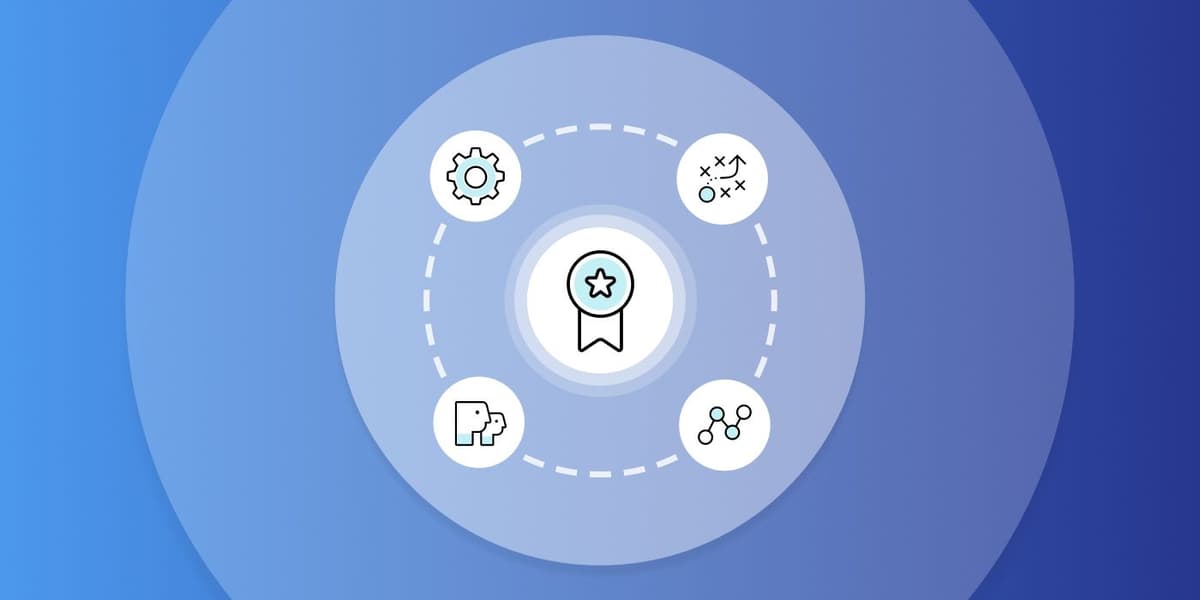Achieving True Connected Customer Engagement
Published on April 01, 2020/Last edited on April 01, 2020/6 min read


Magith Noohukhan
Product Evangelist, BrazeWhen it comes to customer engagement, we’re living in a fast-changing world. One where yesterday’s strategies and technologies can’t keep up with the pace of innovation and evolving consumer expectations—and where new platforms and ways of communicating seem to just keep cropping up, challenging marketers to keep up with them and to find new ways to leverage them to speak effectively with their audiences.
It’s a challenge. But it’s also a major opportunity. While failing to keep up with technology can lead brands to fall behind more swift-footed competitors, companies that get it right today can achieve a level of connected, cohesive customer engagement that’s never been possible before. With the right mix of technology, strategy, data, and teamwork, marketers can see stronger customer relationships, better ROI, and the kind of long-term business success that we all dream about.
To dig deeper into how to make that happen, I sat down with Vincent Kevorkian, Senior Manager, Global Lifecycle Marketing at leading travel platform Skyscanner. Check out videos of our full conversation below, as well as the six key takeaways from our conversation:
1. There’s No Substitute for True Connected Engagement
Today’s consumers expect brands to be able to understand and speak to them without skipping a beat as they jump from device to device. To reach them effectively, you need to ensure that you have the right technology ecosystem—one that allows you to slot in best-in-class technologies for all your different customer engagement needs and to connect them together to support responsive, relevant, and deeply human brand experiences.
2. Data Is Important—but How You Use and Handle That Data Is Just As Important
Brands are constantly collecting data from their users to provide relevant experience to their customers; however, most brands aren’t using that data effectively to create relevant experiences. That, in my opinion, hurts the brand. If you’re not using the data you’re collecting to provide a better, more valuable experience to your customers, it’s time to question whether you actually need that data. By the same token, you need to be a good steward of your customers’ data—in today’s post-GDPR age, consumers need to have confidence that you’re keeping their information safe, secure, and private.
3. Brands Need to Leverage the Channels and Platforms Their Customers Are Using
Now that most consumers carry the internet around in their pocket, it’s become possible for them to access information, order products, and use digital services right from their smartphones—and to do it anywhere, at any time. This shift has led almost every brand to adjust their strategy to prioritize mobile-first digital engagement and—when possible—to pursue ways to do business in a direct-to-consumer, smartphone-focused way.
From launching mobile and web apps to communicating with customers with push notifications, in-app messages, web push notifications, SMS, and other channels, it’s been a major shift with major implications for customer engagement. And that evolution didn’t stop with smartphones (think home devices like Amazon Echo and Google Home, think wearables like the Apple Watch); the spectrum has just kept going. But while the number of communication methods continues expanding, not every channel makes sense for every audience. Brands need to be thoughtful about their cross-channel mix and keep their users’ engagement in mind as they choose what channels to leverage.
4. Bring Lapsing Customers Back to Your Product with a Lifecycle Approach
In today’s customer engagement landscape, one key thing that brands tend to struggle with is how to effectively retain their customer base. Consumers these days have a lot of options—too many, arguably—and that means that it can be hard to keep them engaged and loyal. Having a good product is essential; however, a good product isn’t enough on its own. Without a strong customer experience, even a good product can end up losing out to competitors who are engaging consumers more effectively.
To avoid that outcome, make sure you understand the key consumer touchpoints associated with your product or service, and build out a lifecycle-focused customer engagement strategy that can keep them on the right track. By reaching your audience at the right time and with the right message for their current circumstances, you can lower the chances that they churn—and increase the odds that they come back when they begin to lapse.
5. Leverage AI-Powered Tools to Provide Timely, Relevant Messages
With so many new devices and new channels in the market, understanding how users react to your marketing campaigns, transactional messages, and product-focused outreach can be difficult. As a brand, it’s possible to collect trillions of data points, but all that data can be a distraction if you're not able to curate, understand, and act on it effectively. AI/machine learning tools can make a big difference.
For a brand like Skyscanner, where their users regularly travel from one country to another, real-time, responsive messaging is a must. But by leveraging the AI capabilities built into the Braze platform’s Intelligence Suite, they’ve been able to target their users with the right message, at the right time, through the right channel, providing a genuinely relevant, personalized customer experience.
6. 1:1 Personalization is the Biggest Practical Challenge—and Opportunity—in Customer Engagement
Capturing and leveraging first-person user data—and making adjustments as each user’s preferences and behavioral patterns change—is key to creating relevant, truly personalized customer experiences. But while the nature of that data and the messages it can power will be somewhat different for every industry and individual brand, providing individually relevant experiences to your customers is no longer a nice-to-have; it’s essential.
At Skyscanner, they know that each step of the customer journey requires its own individualized approach. Understanding when someone is thinking of buying a plane ticket is different from knowing that they’ve actively begun searching for a ticket, and, to see the best results, it’s important that brands understand what different cues mean and have the technology and strategy in place to provide personalized nudges throughout each customer’s lifecycle.
Final Thoughts
At Braze, it’s our mission to power relevant and memorable experiences between customers and the brands they love. Check out our look at the Braze Alloys partnership ecosystem and learn how our platform can help brands provide meaningful, relevant customer experiences by playing nicely with a wide variety of different technologies.
Related Tags
Be Absolutely Engaging.™
Sign up for regular updates from Braze.
Related Content
View the Blog
The new inbox reality: How iOS changes are reshaping email marketing

Aparna Prasad

Experience optimization: Turning data insights into better journeys

Team Braze

December 2025 Bonfire Marketer of the Month: Jagex’s Emma Oliver
